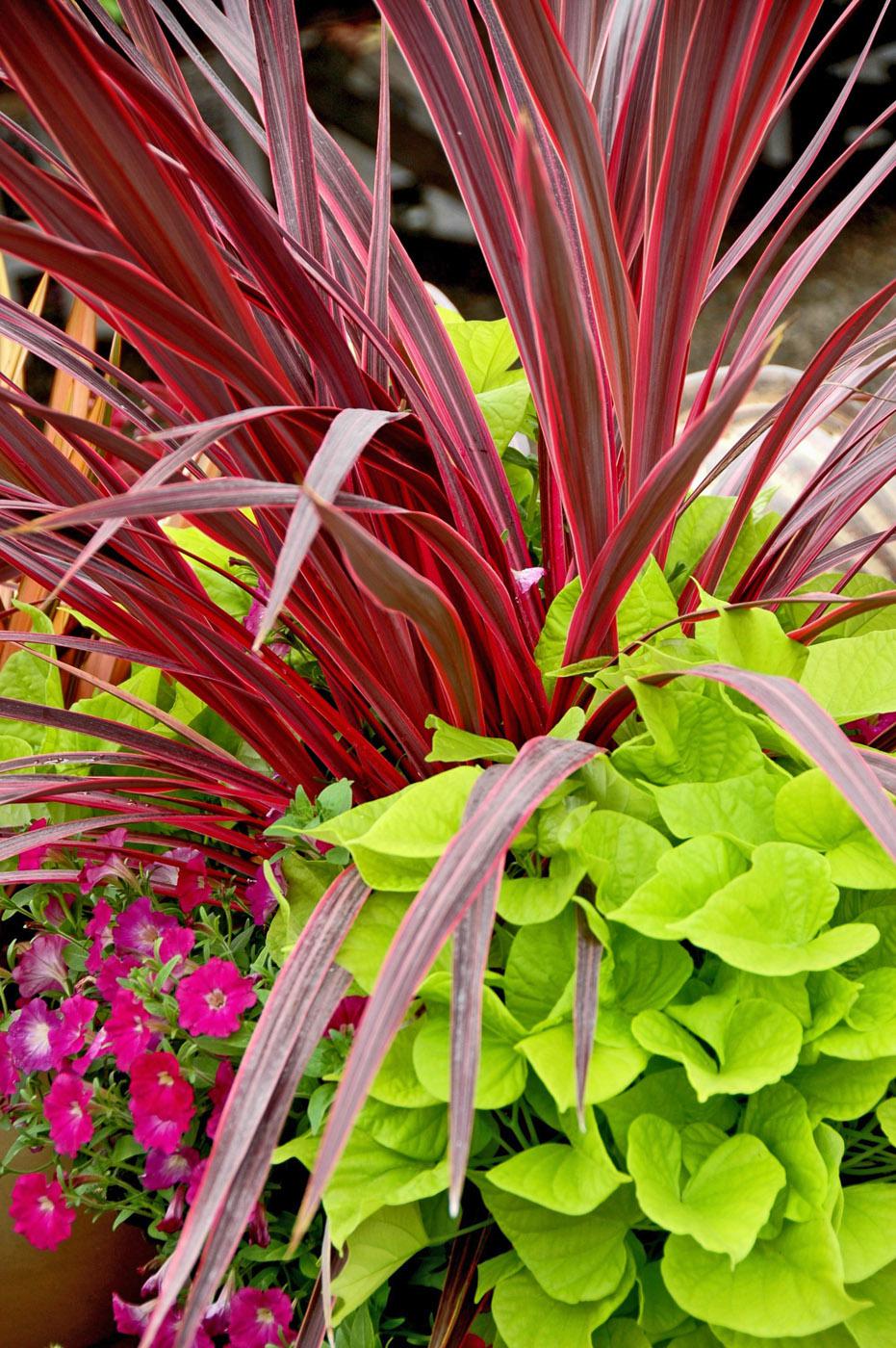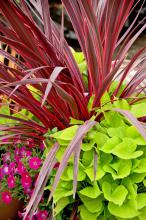Information Possibly Outdated
The information presented on this page was originally released on August 28, 2008. It may not be outdated, but please search our site for more current information. If you plan to quote or reference this information in a publication, please check with the Extension specialist or author before proceeding.
Cordylines' dagger-like look soars in popularity
By Norman Winter
MSU Horticulturist
Central Mississippi Research & Extension Center
Daggers have become extremely popular in the garden in recent years. I'm not talking about knives, but the kind of leaves found on plants like the new Electric Pink, Purple Sensation and Cardinal.
You may be wondering what kind of plants these are, and after my revelation, you still may be a little confused. These plants are all varieties of cordyline. You may be familiar with Hawaiian Ti plant, which is a cordyline.
Cordylines like Electric Pink are much different. They have common names like New Zealand cabbage tree, cabbage palm and Giant Dracaena. They also are called Ti plants, although they are much easier to grow and much more cold hardy.
A few years ago, there were only a handful of cordyline varieties, with Red Sensation and Red Star being the most popular. Now producers are growing dozens with a wide range of colors and variegation.
Though I refer to cordylines as dagger-like, landscape designers call them architectural plants. Place them in large mixed containers or in flower borders, and suddenly you have that look others hire a professional to produce.
Every year I go to California to see plant trials. While there, I take the opportunity to observe what is in western landscapes and mixed containers at shopping malls. Invariably I get jealous of the way Californians are able to use phormiums, or New Zealand flax. The bold, sword-like leaves are colorfully variegated and just scream, “Look at me!” But the heat and humidity of the rest of the country is just too much for the phormium.
Guess what? Cordylines give the same look and are much better suited to summer extremes. Electric Pink stands out from a great distance because of its maroon leaves edged in a shocking hot pink. It is clump-forming and reaches 2 feet to 4 feet in height and width.
One of the most beautiful plantings of Electric Pink I have seen used it as a thriller plant in a large mixed container with Sweet Caroline Sweetheart ornamental sweet potato. The combination of hot pink and the sweet potato's lime-green foliage was beautiful.
Cardinal also is clump-forming and should reach 4 feet tall, although it usually grows a little more upright before arching. The leaves of Cardinal are a variegated red-purple.
Purple Sensation is almost the reverse of Electric Pink. It has purple-maroon on the outside and reddish-pink in the middle. Reaching 6 feet, it is the tallest of the three cordylines.
The cordyline has become so popular so fast that there has not been sufficient time to collect much data on size and cold hardiness. I even have seen photos of them in the Pacific Northwest practically covered in snow. Most of the country will treat these plants as annuals.
Catalogs are touting these varieties as perennials in zone 8, but this most likely will occur only with mulch and near-perfect winter drainage. Grow cordylines in fertile, well-drained soil. They need plenty of sunlight but will tolerate afternoon shade.
Many gardeners enjoy cordylines indoors during the winter, placing them in brightly lit areas of the home and reducing the amount of water they receive.
In the landscape or as a riveting thriller plant in a mixed container, you are sure to enjoy an Electric Pink, Purple Sensation or Cardinal cordyline.



